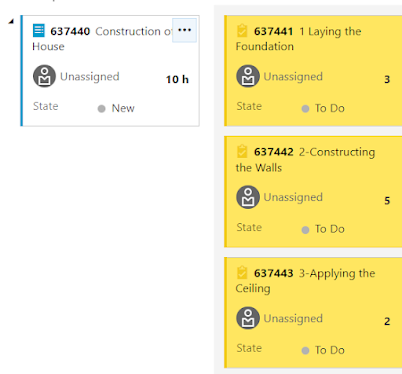Problem
Dan who is the manager of a team is concerned about his Team's performance. He thinks that his team isn’t performing well and there was no coordination among the team members. Mostly team meetings ended abruptly due to arguments.
He researched on the factors that generally make a self-organized team. They were mutually accountable with the sense of ownership, their skills were complementary, they had all the infrastructure they needed to work independently.
Dan decided to invest in training, hoping it would help them learn to work together. Team was trained on conflict management skills, listening skills, and how to have crucial conversations. His hope was that with the right skills he’d begin to see healthy self-organizing behavior.
But they still argued on the petty things and blamed each other for the failures and didn’t produce much of anything.
Though the training was valuable that wasn’t what was needed. They needed clarity about their customer and their requirements and constraints around Prioritizing their work.
Now the question Dan had was how does he create a great working environment for the team to be self-organized?
Solution
The solution to the above situation is to notice the team behavioral patterns and shape them.
To Address and shape the patterns, Training isn’t the solution. We must influence the system by catering to Clarity, Conditions, and Constraints.
Clarity
A team with high sense of clarity knows what to work on, what to work on next, and the scope of their work but it doesn't mean they have a handy task list and a requirements document. They have enough clarity to take initiative and make decisions because they know:
· Who the customer is and what is their business?
· How does their work add value to the Customer's success?
· What is the current market trend of the Customer's business?
· Good Domain Knowledge
When people don’t have the clarity, they either wait to be told what to do or take actions voluntarily and make costly mistakes.
Conditions
Conditions refers to the environment that support the work. For a team to work relentlessly, collaborate and communicate they should have the supporting infrastructure like a suitable Collaborating tool, Access to meeting rooms, required level of access and supportive service desk which can help the team whenever required.
Constraints
We often think of Constraints as a negative thing that inhibit the flow and get in the way of work. However, Constraints also reduce flailing and support work. They tell you what should never be done and what should always be done.
Constraints help people to take decisions and scope of actions within their boundaries. For example, a team may have the freedom to choose their own tools for compiling their code and they are aware that the budget limit is $30,000. Say the team uncovers a Compiling tool that will save them enormous time but costs $31,000. This situation triggers a conversation with the management, so the team can make the business case for the additional expenditure.
Conclusions:
In the above example, lack of clarity, insufficient conditions, and under-constraint contributed to the pattern on the team—and the lack of results.
The action would be to clarify the goal, get people the skills they need and put some necessary constraints around the project and leverage the decision-making authority with the team.
And not necessarily you have to wait until the situation is in a mess. You can consider all these things when forming a team or starting a new project. You can look at your organization now, and if you see a pattern that isn’t working, ask about clarity, conditions, and constraints. Do people know what they need to know? Do they have what they need to do the work? Are they clear on what the boundaries are? See what you can adjust—No pushing, just adjusting clarity, providing supportive conditions, and adjusting constraints. And watch out for the results


Comments
Post a Comment